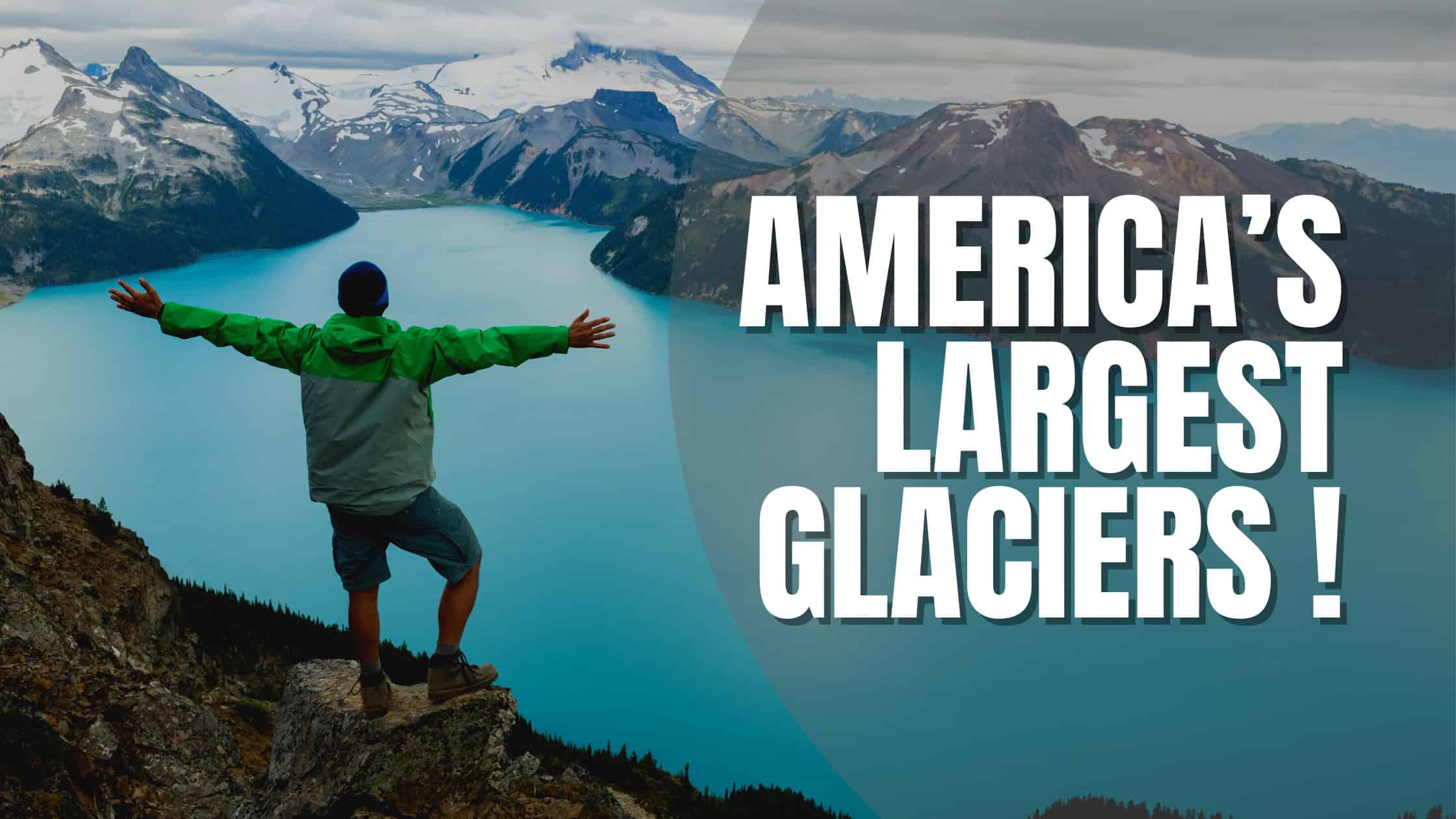Glaciers are huge accumulations of snow and ice that are constantly moving due to their own weight. These typically slow-moving masses are capable of transforming landscapes over centuries. They create landforms such as hanging valleys, glacial lakes, and fjords through the sheer force of their movement.
There are around 200,000 glaciers in the world, and around 68% of the Earth’s freshwater can be found in them. Glaciers can be thousands of feet deep and cover hundreds of miles of land, so read on to discover the largest glaciers in the United States!
12. Nelchina Glacier
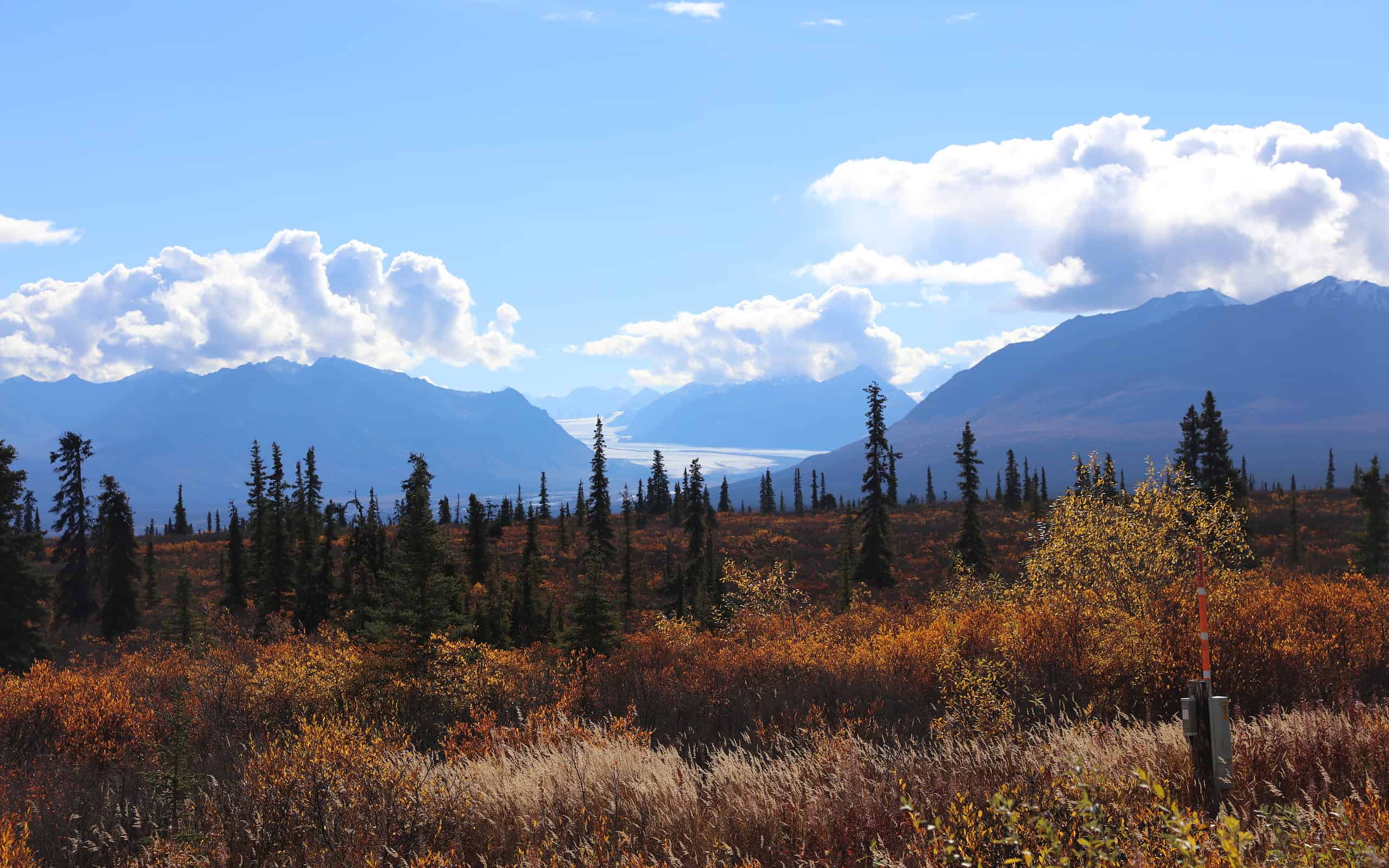
The Nelchina Glacier is located in the Chugach Mountains close to Eureka.
©Enrico Blasutto, CC BY-SA 4.0, via Wikimedia Commons - License
All of the glaciers on the list are actually in Alaska, and the first is the Nelchina Glacier which is 23 miles long and spans 121.4 square miles. It is located close to Eureka and can be accessed by snowmobile as part of a popular day trip touring the Chugach mountain range. Nelchina Glacier is located on the north side of the mountains and ends at the headwaters of the Nelchina River.
11. Columbia Glacier
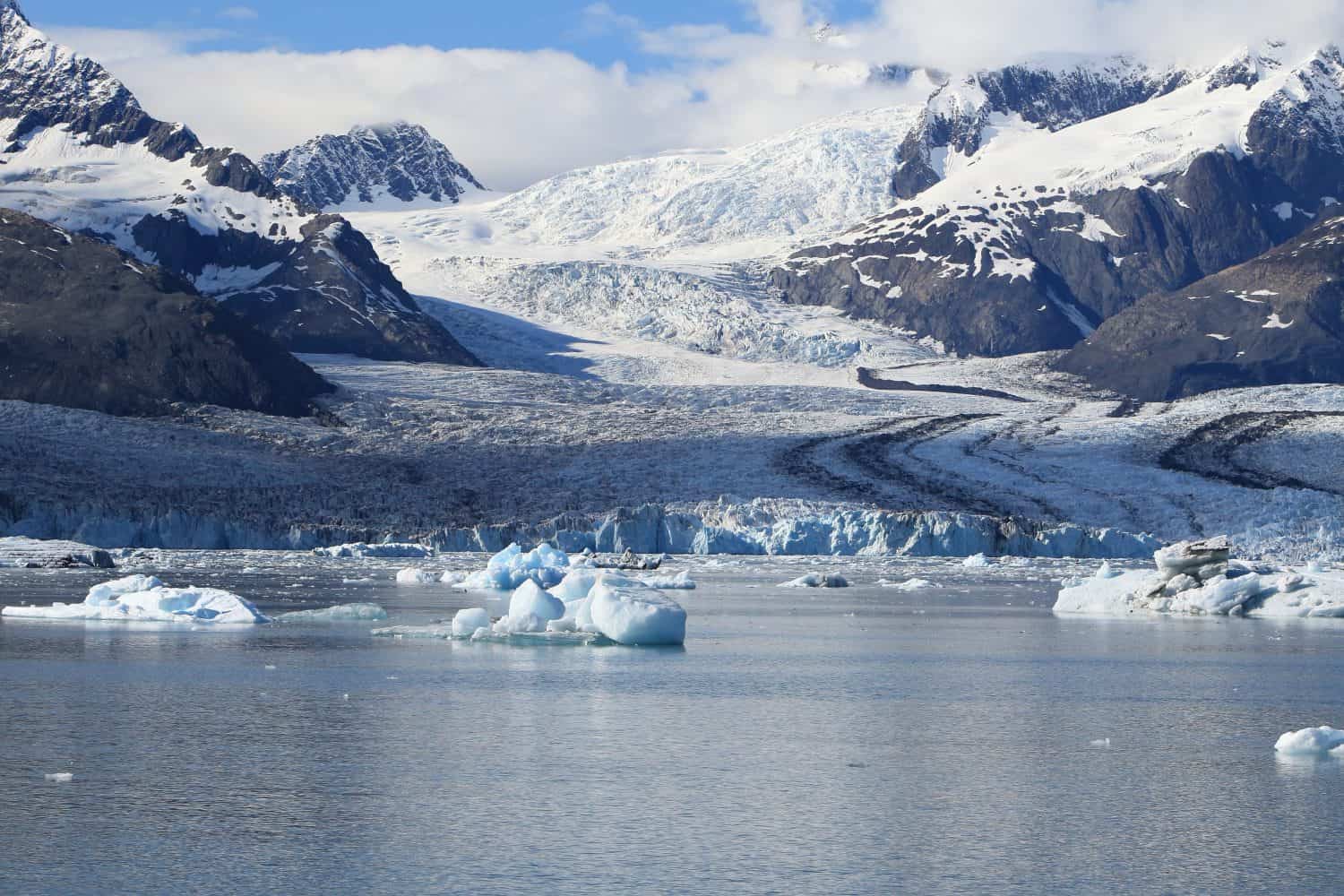
The Columbia Glacier is a tidewater glacier that spans 161.5 square miles.
©Frank Fichtmueller/Shutterstock.com
The next glacier is the Columbia Glacier which has an area of 161.5 square miles and a length of 32 miles. It is a tidewater glacier and begins in an icefield at an elevation of around 10,000 feet before it eventually discharges directly into the sea near Prince William Sound.
Columbia Glacier is one of the fastest glaciers in the world but is also retreating at an alarming rate. Since the 1980s, it has retreated at an average of 0.37 miles per year, and at its maximum, it was losing around 98 feet per day in 2001 when huge icebergs were regularly carving off.
10. Ruth Glacier
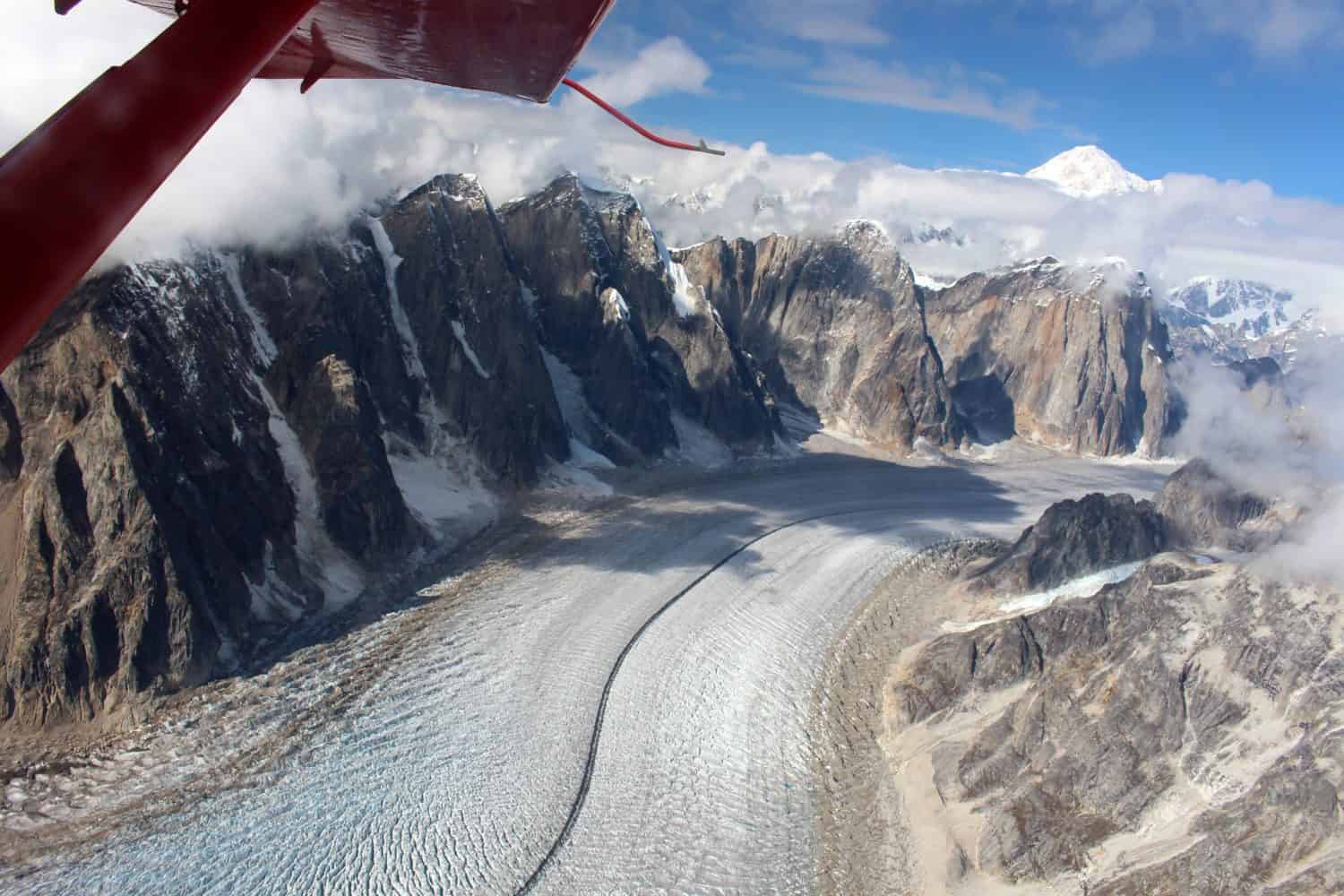
The Ruth Glacier travels through the “Great Gorge” at a rate of 3.3 feet per day.
©jet 67/Shutterstock.com
Ruth Glacier is located in Denali National Park and is 40 miles long, covering 163.2 square miles. It moves through the ten-mile-long “Great Gorge”, which is a huge gorge that is one mile wide and has towering walls approximately 5,000 feet high.
The glacier features ice 3,800 feet thick and moves at a rate of around 3.3 feet per day. It exits the gorge through a section that is known as the Ruth Icefall. Despite the treacherous nature, the Ruth Glacier and the Great Gorge are both incredibly popular with hikers and climbers.
9. Tazlina Glacier
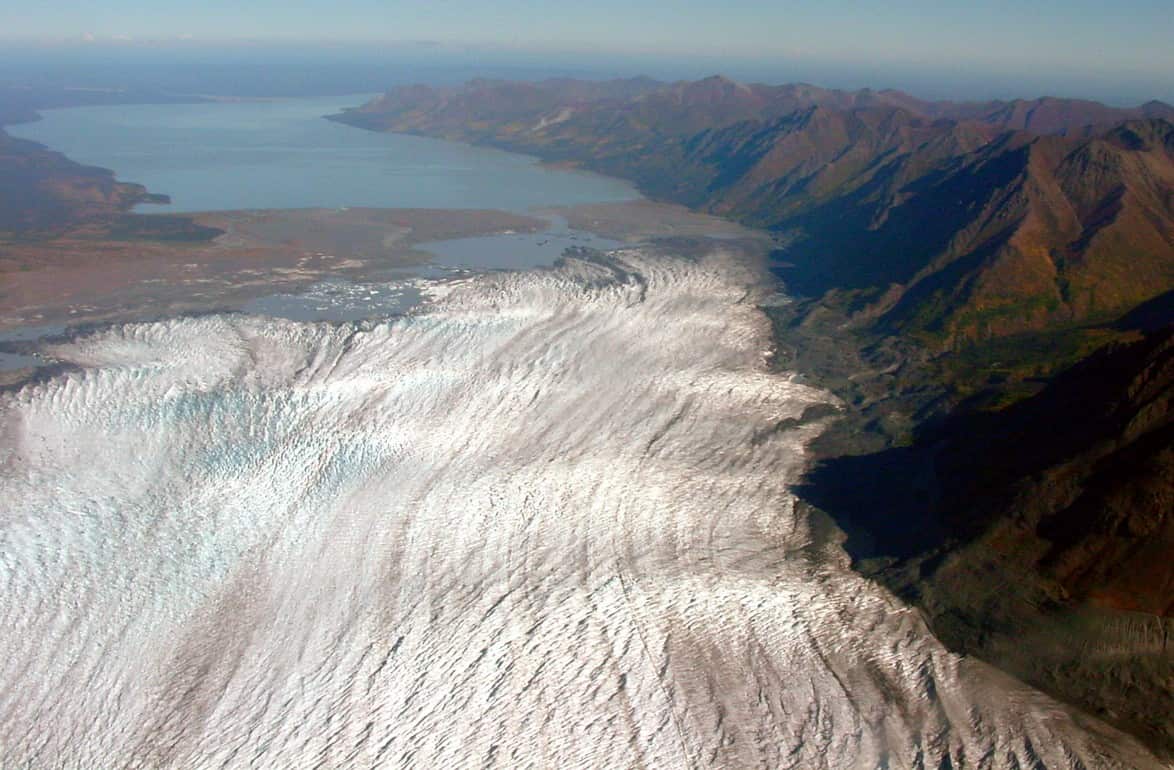
The Tazlina Glacier spans 163.7 square miles but is currently retreating.
©U.S. Geological Survey, Public domain, via Wikimedia Commons - License
Another large glacier in the United States is Tazlina Glacier, which spans an area of 163.7 square miles. It is 25 miles long and is considered to be the biggest north-flowing glacier in the Chugach Mountains. The glacier ends approximately one mile from Tazlina Lake but is currently retreating. Tazlina Glacier is a popular tourist spot, with camping and fishing spots near the lake. It’s also a popular area for backcountry skiing.
8. Barnard Glacier

The Barnard Glacier spans 177 square miles but is currently in a period of retreat.
©National Park Service, Alaska Region, Public domain, via Wikimedia Commons - License
The Barnard Glacier is located near McCarthy in Alaska and covers 177 square miles. The glacier is 33 miles long and the end point features two small streams. Below the terminus is a bare area before a spruce forest, and this portion of barren land suggests that the glacier has been in a period of retreat for a long time.
7. Miles Glacier
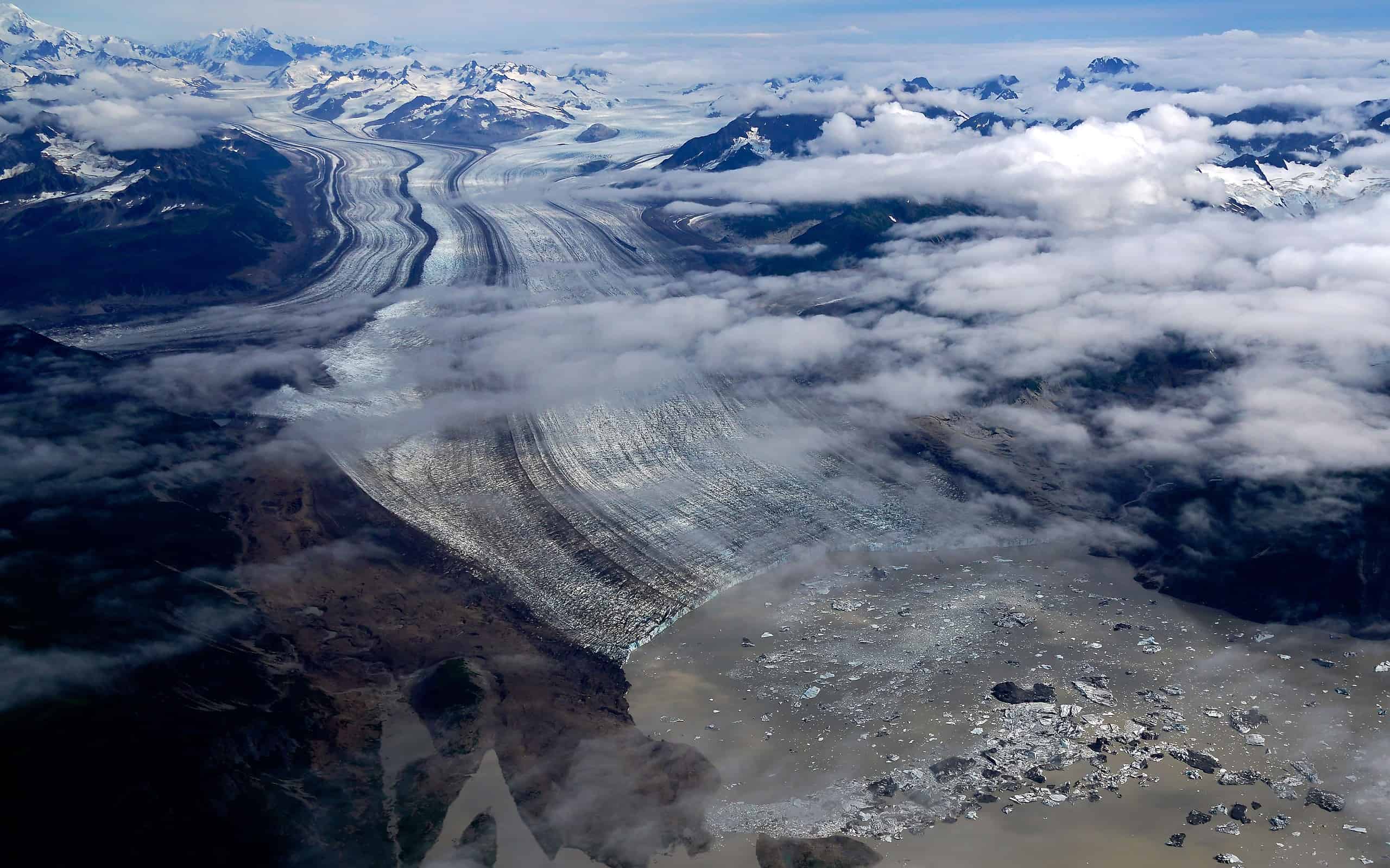
Miles Glacier is 30 miles long and ends at Miles Lake.
©NASA ICE, CC BY 2.0, via Wikimedia Commons - License
The Miles Glacier is 30 miles long and spans 187.5 square miles. It was named after Major General Nelson Miles during his 1885 expedition with Lieutenant Allen. The glacier flows westward and terminates at Miles Lake.
6. Black Rapids Glacier
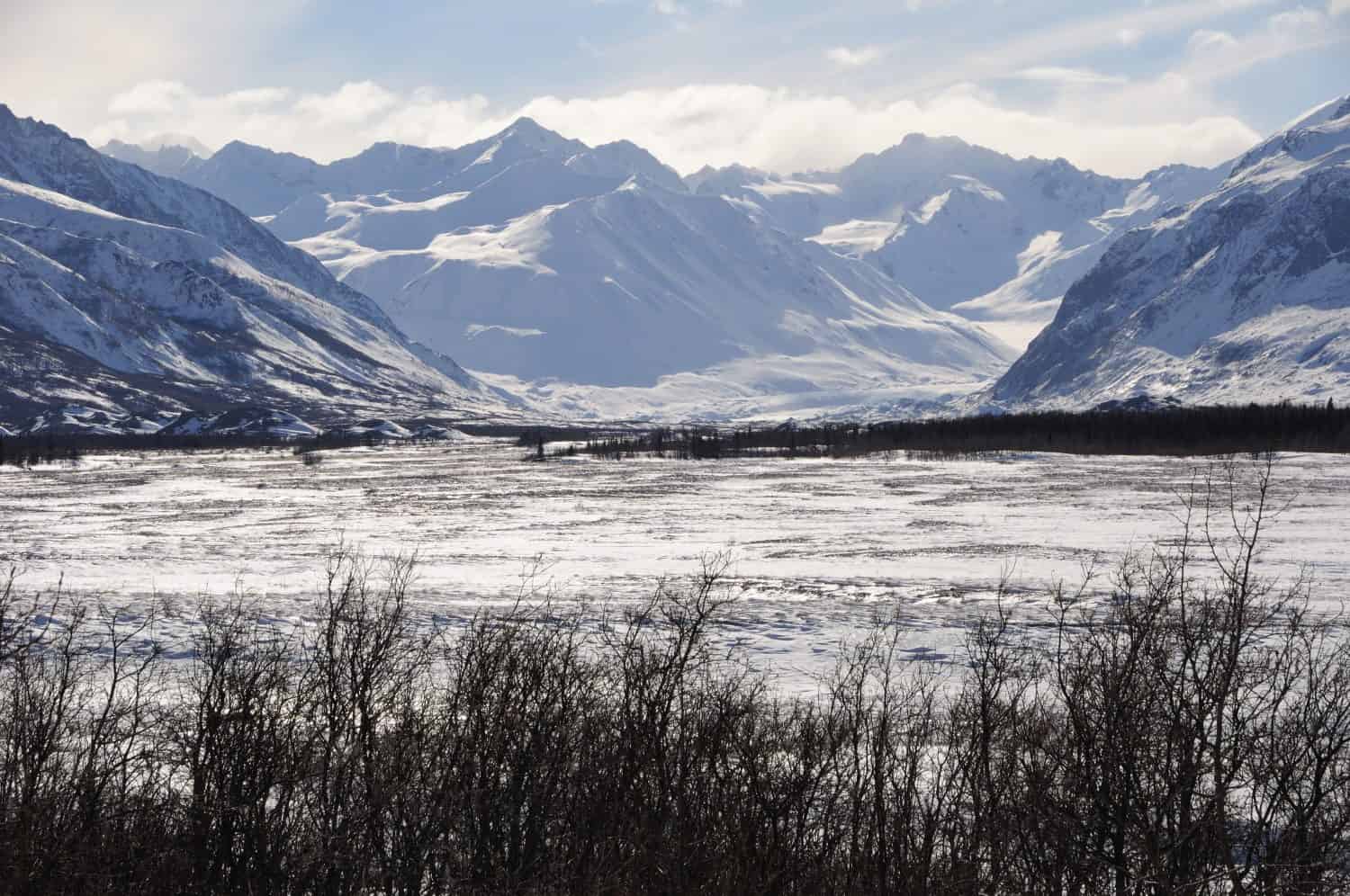
The Black Rapids Glacier is nicknamed the “Galloping Glacier” because of the speed at which it travels.
©Gary Whitton/Shutterstock.com
The Black Rapids Glacier is next on our list of the largest glaciers in the United States, with an area of 197 square miles. It is approximately 25 miles long and has an elevation of 3,806 feet.
The Black Rapids Glacier is considered to be a “surge-type” glacier. This is because it can move much faster than normal during periods of advancement. It is often called the “Galloping Glacier” because of the speed at which it moves.
5. Hubbard Glacier
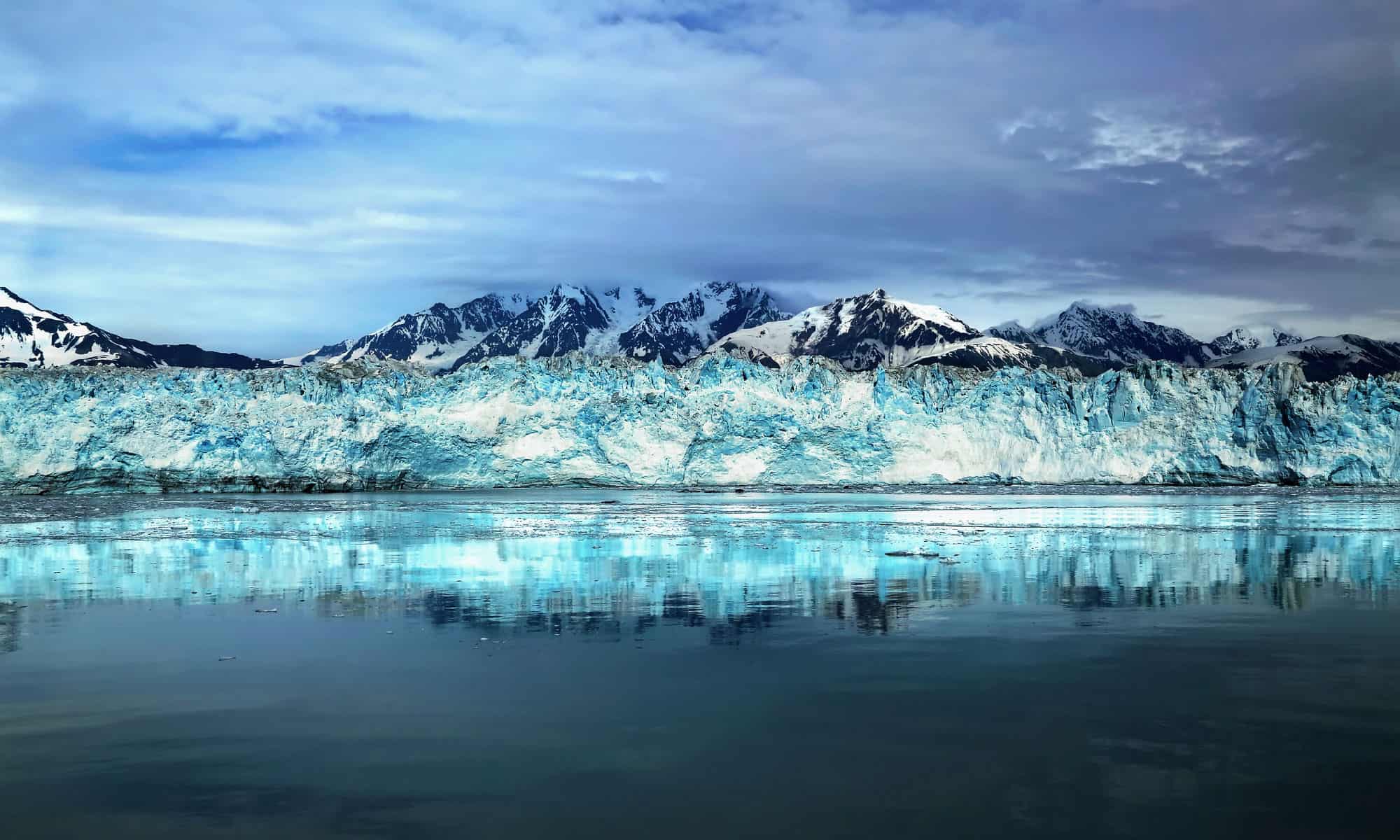
The Hubbard Glacier is currently advancing into Disenchantment Bay.
©iStock.com/Spaceliner
The largest tidewater glacier in the United States is the Hubbard Glacier, with an area of 214 square miles and a length of 76 miles. Unlike many of the other glaciers on the list, the Hubbard Glacier is currently advancing. Its current rate of advancement is around 80 feet per year, and it is currently moving slowly into Disenchantment Bay. However, large portions of ice remain below the water line, making it an incredibly dangerous place for ships.
4. Martin River Glacier
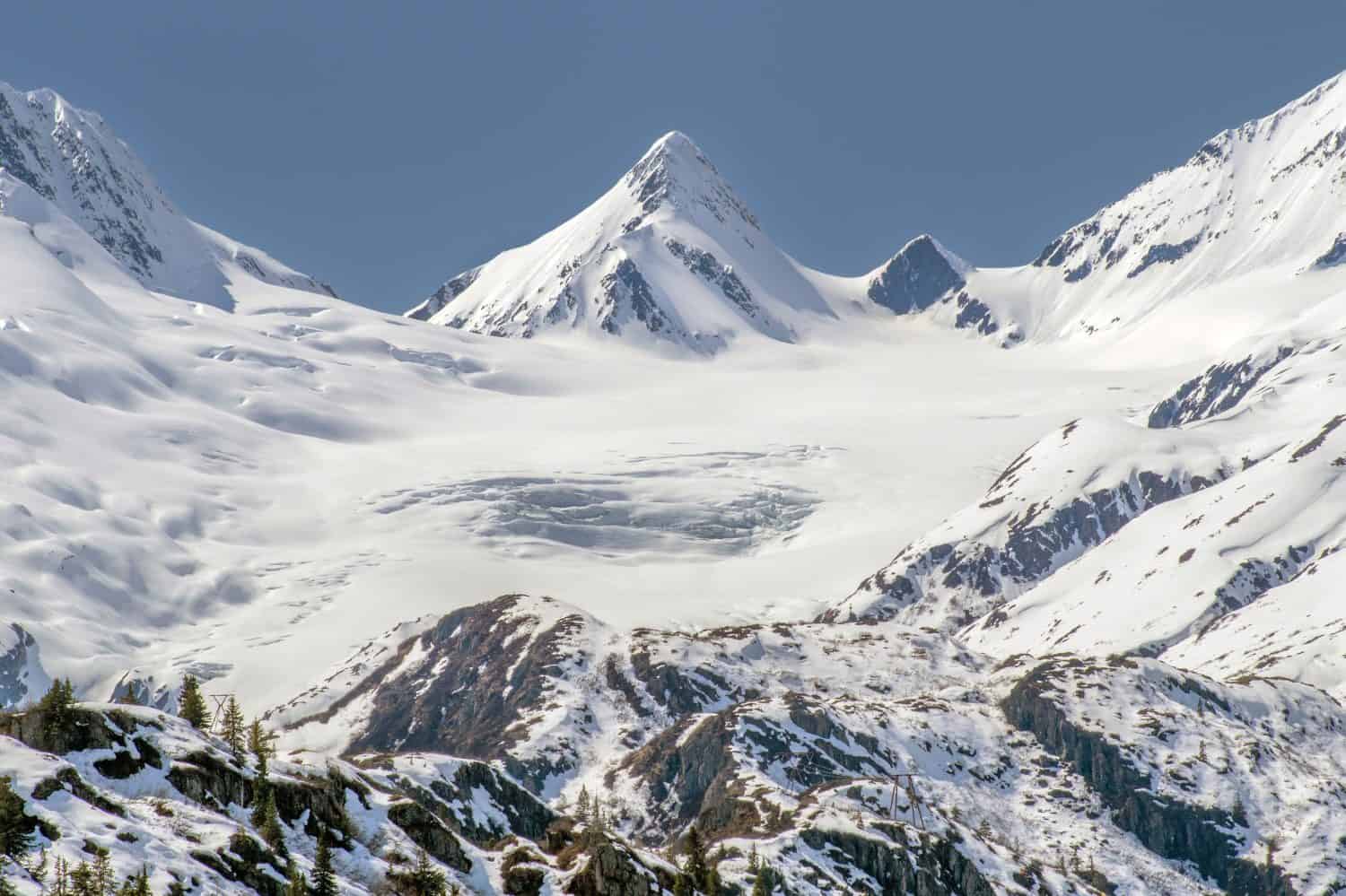
The Martin River Glacier is located in the Chugach Mountains.
©Lex Nast/Shutterstock.com
Next on the list is the Martin River Glacier, which spans 243.8 square miles. Although it is 25 miles long it is currently retreating. The Martin River Glacier is located in the Chugach Mountains and is situated at an elevation of 2,999 feet. It terminates at the headwaters of the Martin River.
3. Nabesna Glacier
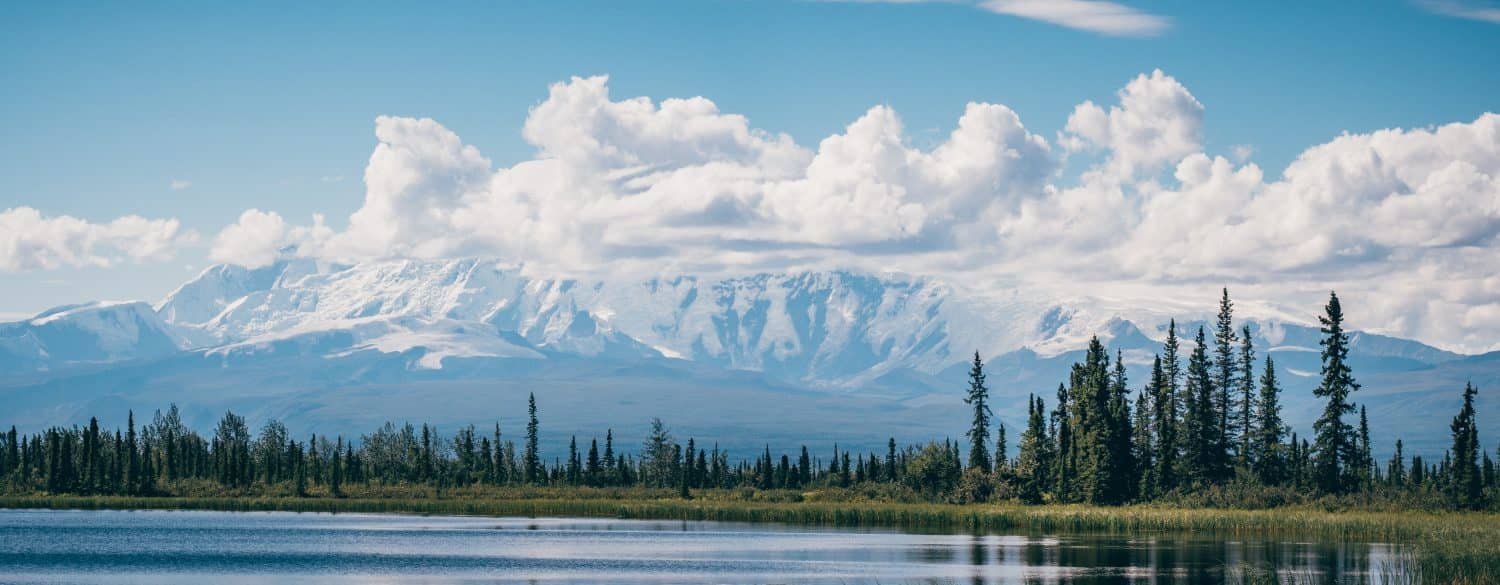
The Nabesna Glacier is located on the side of Mount Wrangell.
©attilio pregnolato/Shutterstock.com
The Nabesna Glacier spans 353 square miles, and with a total length of 53 miles, it is classed as the longest valley glacier in North America. Nabesna Glacier is fed by a huge icefield that covers the northern side of Mount Wrangell, while the melting ice from its endpoint turns into the Nabesna River.
The glacier is currently retreating, and estimates suggest that this began at least one hundred years ago. However, glacial deposits in the valley below the current glacier suggest that it may have been retreating for much longer.
2. Malaspina Glacier

The Malaspina Glacier is a Piedmont glacier that spans 1,506 square miles.
©NPS Natural Resources, Public domain, via Wikimedia Commons - License
The second position goes to the Malaspina Glacier, which is 40 miles wide and 28 miles long and covers 1,506 square miles. The Malaspina Glacier is located in the southeastern region of Alaska and is considered to be the largest Piedmont glacier in the world. Interestingly, the Malaspina Glacier is technically made up of three individual glaciers — Agassiz, Marvine/Hayden, and Seward glaciers — but it is usually referred to as a single entity.
1. Bering Glacier
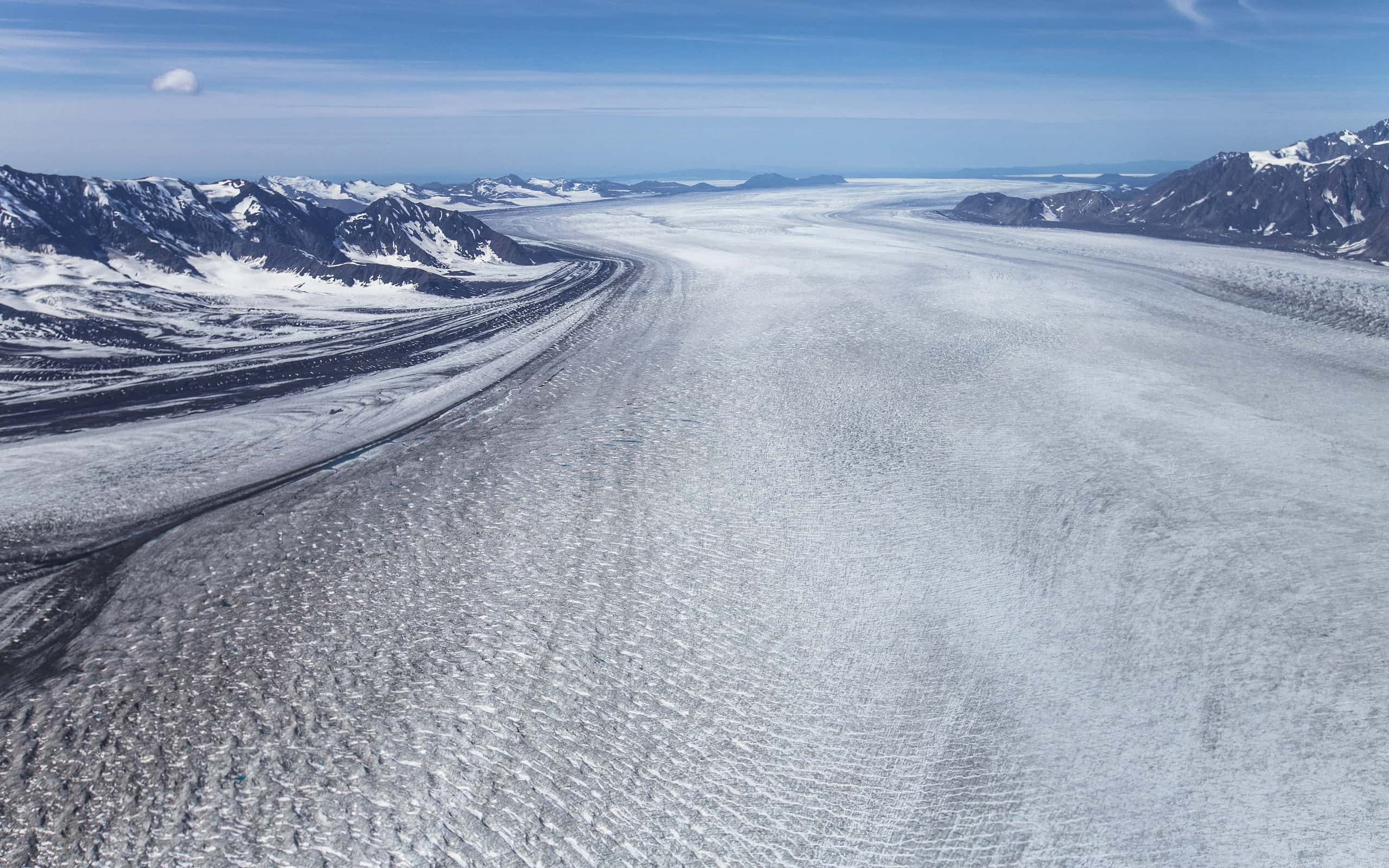
Although it is retreating, the Bering Glacier spans 1,900 square miles.
©National Park Service, Alaska Region, Public domain, via Wikimedia Commons - License
The largest glacier in the United States is the Bering Glacier, which is 126 miles long and covers approximately 1,900 square miles when combined with the ice fields that feed it. It is located in Alaska and currently ends in Vitus Lake approximately six miles from the Gulf of Alaska.
Although the glacier has experienced several “surges” within the last 100 years, the latest being between 1993 and 1995, it is currently retreating. As the Bering Glacier tends to retreat after it surges it is actually shrinking overall. It is currently retreating so much that the endpoint has retreated by around 7.5 miles since the beginning of the twentieth century.
Summary Table of the Largest Glaciers in the United States
| Rank | Glacier | Size (Square Miles) |
|---|---|---|
| #1 | Bering Glacier | 1,900 |
| #2 | Malaspina Glacier | 1,506 |
| #3 | Nabesna Glacier | 353 |
| #4 | Martin River Glacier | 243.8 |
| #5 | Hubbard Glacier | 214 |
| #6 | Black Rapids Glacier | 197 |
| #7 | Miles Glacier | 187.5 |
| #8 | Barnard Glacier | 177 |
| #9 | Tazlina Glacier | 163.7 |
| #10 | Ruth Glacier | 163.2 |
| #11 | Columbia Glacier | 161.5 |
| #12 | Nelchina Glacier | 121.4 |
Thank you for reading! Have some feedback for us? Contact the AZ Animals editorial team.

